In the visually striking and action-packed universe of the John Wick franchise, symbolism is woven deeply into the narrative fabric. Beyond the balletic action sequences and character names echoing mythology, the very skin of John Wick tells a story. His tattoos, far from being mere aesthetic choices, are laden with meaning, offering profound insights into his complex past and inner turmoil. Among these, John Wick’s back tattoo stands out as a particularly significant piece, revealing layers of his identity that go beyond his persona as the Baba Yaga.
While the films are celebrated for their thrilling action, they subtly enrich the protagonist, John Wick, through visual storytelling. His tattoos are a prime example, acting as silent narrators of his life before the events of the first movie. These aren’t just random designs; John Wick’s back tattoo and others are deliberate choices that speak volumes about his upbringing, criminal affiliations, spiritual leanings, and even regrets. They paint a portrait of a man perpetually wrestling with the dichotomy of good and evil, a conflict etched onto his very being.
The Marine Corps Veteran Theory: “Fortis Fortuna Adiuvat”
 Keanu Reeves receiving new weapons in John Wick Chapter 4
Keanu Reeves receiving new weapons in John Wick Chapter 4
John Wick’s exceptional combat prowess, firearm expertise, and commanding body language suggest a military background. Supporting this theory is John Wick’s back tattoo, prominently featuring the Latin phrase “Fortis Fortuna Adiuvat”. This translates to “fortune favors the bold,” a sentiment deeply resonant within military culture. Interestingly, it closely mirrors “Fortes Fortuna Juvat,” the motto of the 2nd Battalion, 3rd Marines, with a subtly altered word but a shared core meaning. Such motivational phrases are frequently adopted as tattoos across various armed forces branches, making the presence of “Fortis Fortuna Adiuvat” on John Wick’s back tattoo a compelling piece of evidence for his potential Marine Corps past.
A Glimpse of Faith: Praying Hands and a Cross
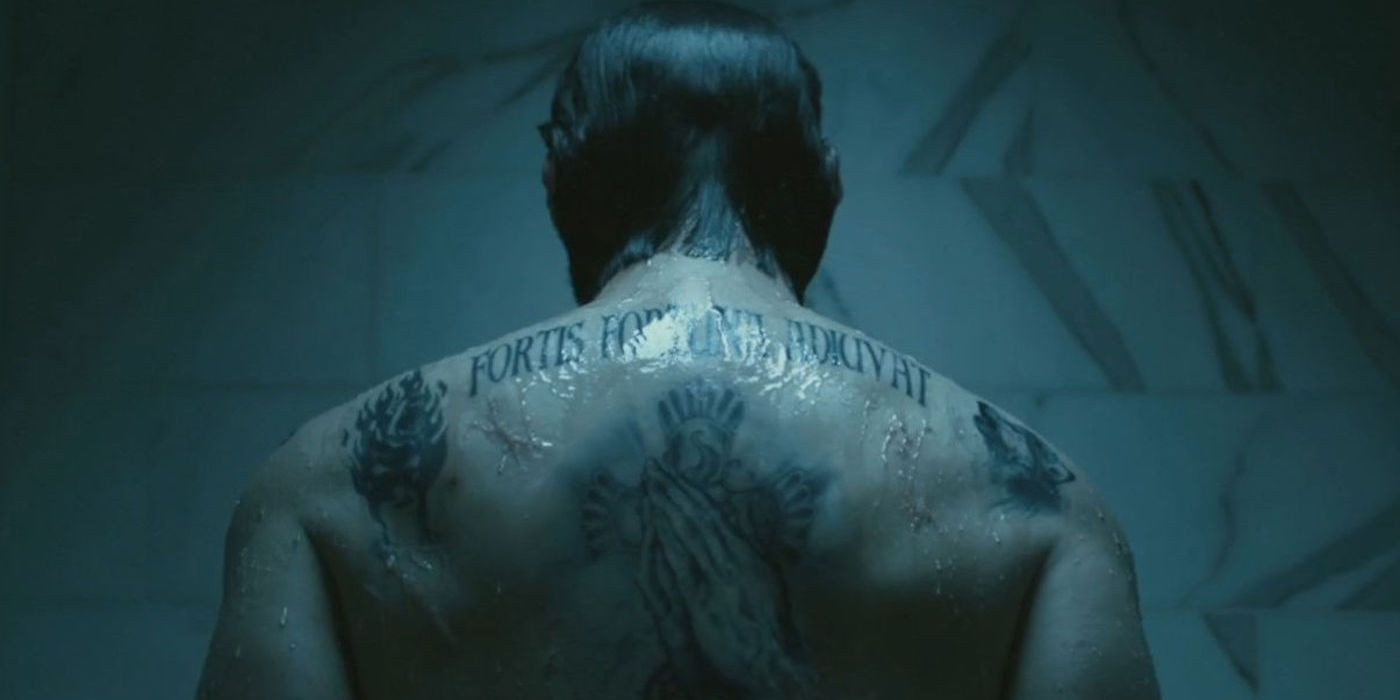 John Wick in the shower in John Wick
John Wick in the shower in John Wick
In a revealing shower scene in the original John Wick film, a deeper layer of John Wick’s back tattoo is unveiled. Beneath the “Fortis Fortuna Adiuvat” inscription, two hands clasped in prayer are depicted above a cross, with rays emanating from its three visible points. This imagery strongly suggests a man of faith, someone with a profound devotion to a higher power. The placement of this pious tattoo on his back could indicate a deeply ingrained spiritual belief system. While his path of vengeance might seem antithetical to religious teachings, this tattoo hints at the “fallen angel” archetype – a man perhaps once righteous, now stained by the sins of his violent past, adding complexity to his anti-hero persona.
Pagan Undertones: Fortuna, the Goddess of Luck
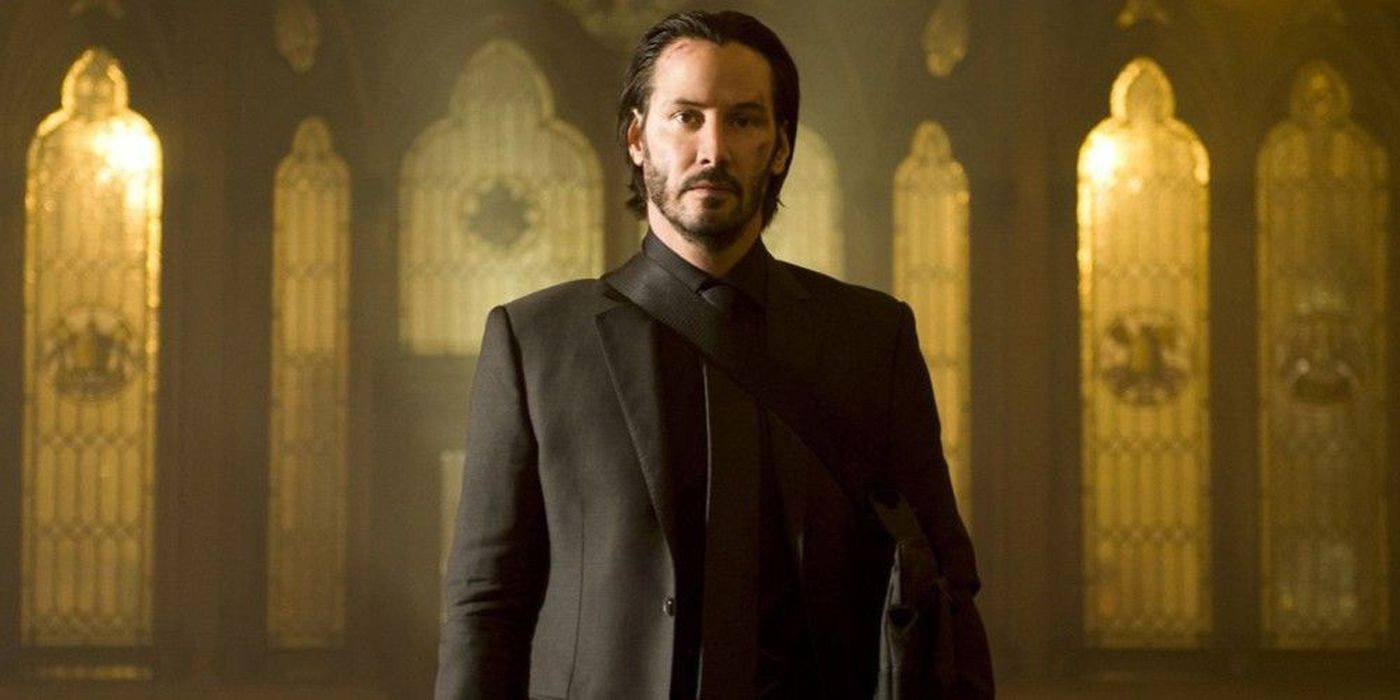 John Wick standing in a church
John Wick standing in a church
The interpretation of “Fortis Fortuna Adiuvat” on John Wick’s back tattoo extends beyond a simple military motto. Latin scholars have debated its nuances, with some suggesting a translation closer to “It is only the strong ones that Fortuna comes to save.” Fortuna was the Roman Goddess of Fortune and Luck, a powerful deity governing fate and opportunity. She could bestow blessings or curses based on her unpredictable whim. Despite the overt Christian symbolism of the praying hands, the inclusion of “Fortis Fortuna Adiuvat” on John Wick’s back tattoo opens the possibility of pagan beliefs. John Wick might subscribe to a philosophy guided by fate and luck, living according to the perceived will of Fortuna, adding another layer to his enigmatic character.
Scars of Incarceration: The Wolf “Oskal” Tattoo
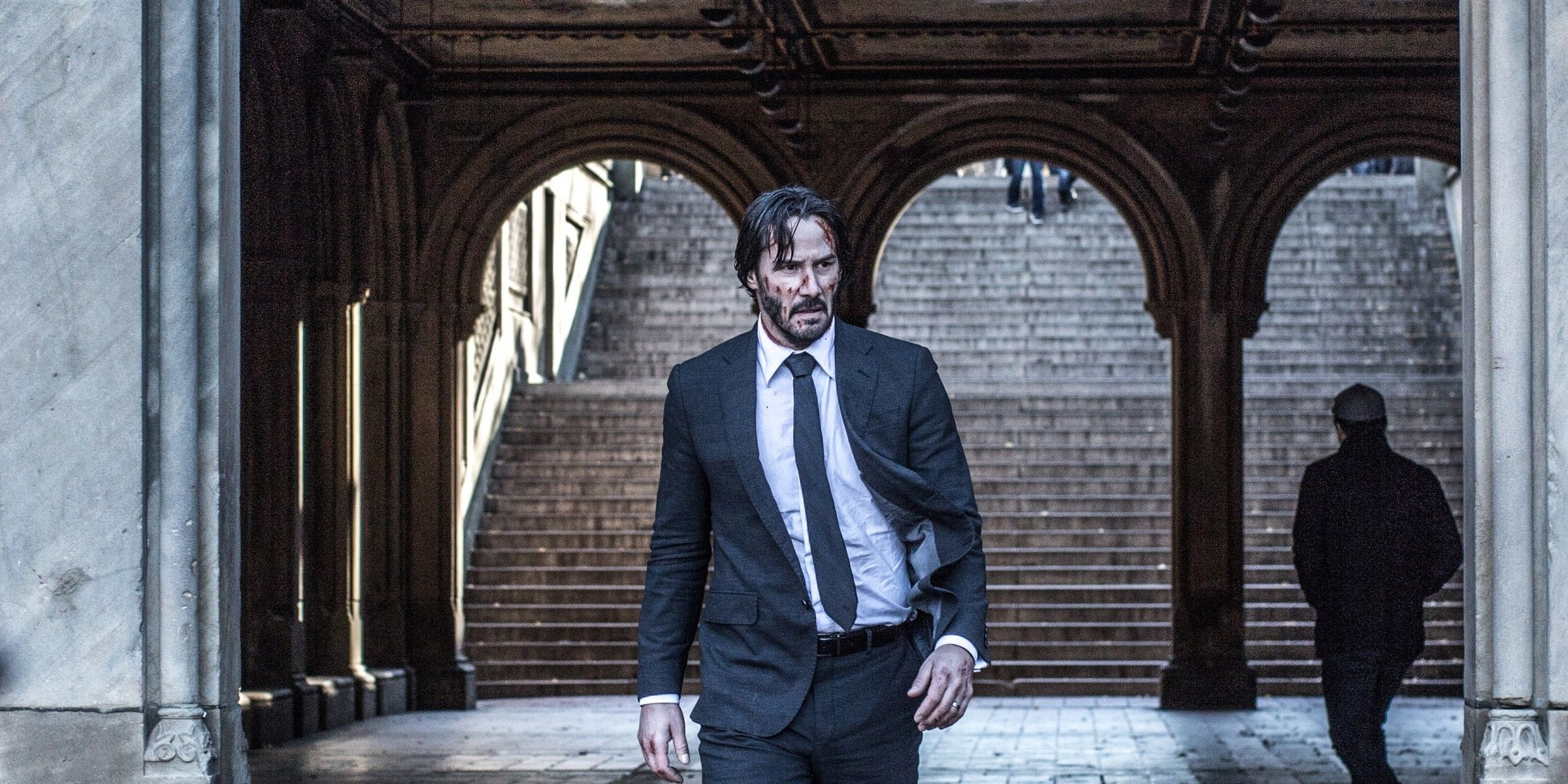 Keanu Reeves as John Wick covered in scratches in John Wick Chapter 2
Keanu Reeves as John Wick covered in scratches in John Wick Chapter 2
John Wick’s history with the Ruska Roma, revealed in later films, suggests a formative period within this Belarussian crime syndicate. Adding weight to his potentially turbulent past is the wolf tattoo on his right shoulder, visible alongside John Wick’s back tattoo. In Russian prison culture, snarling wolves, tigers, or leopards are known as “oskals,” meaning “Big Grin.” These tattoos are typically bestowed upon inmates known for their aggression and defiance against authority. The presence of an oskal tattoo on John Wick could signify a period of incarceration in a Russian prison, potentially due to actions taken for the Ruska Roma in his youth. Alternatively, it might represent a mark given by the Ruska Roma themselves for insubordination during his formative years within the organization.
Russian Mob Affiliations: Tattoos of Association
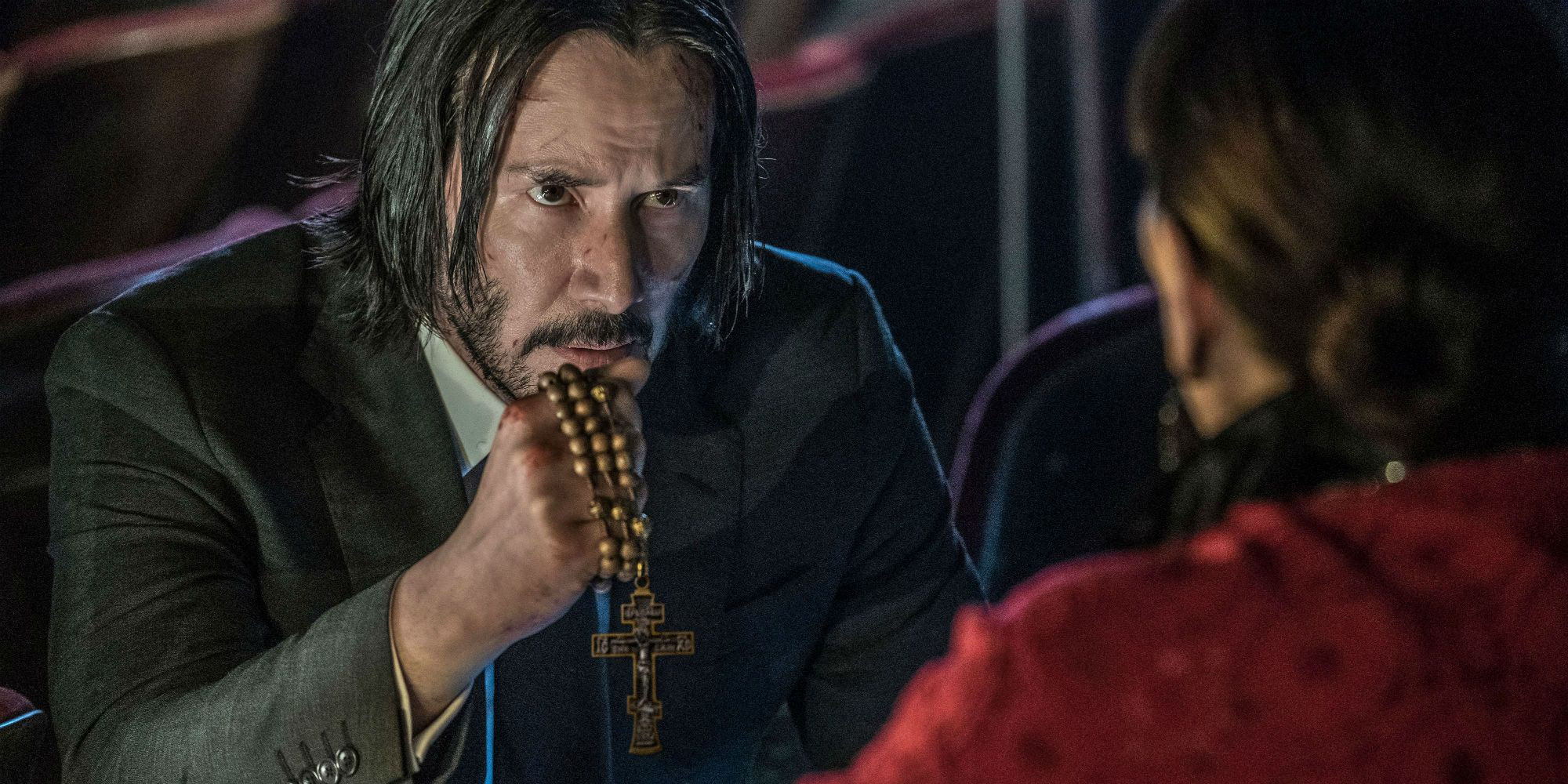 John Wick holding a cross in John Wick Chapter 3 – Parabellum
John Wick holding a cross in John Wick Chapter 3 – Parabellum
In the initial John Wick film, his past allegiance to the Tarasov family, a prominent Russian mob clan, is central to the plot. Iosef Tarasov’s fateful decision to steal John Wick’s car and kill his dog ignites the events of the movie, despite Wick’s years of loyal service to the family. While Iosef himself sports numerous tattoos, including a back piece, it’s plausible that John Wick acquired some of his own ink, including elements of John Wick’s back tattoo and shoulder tattoos like the wolf, during his time with the Tarasov organization. These tattoos could represent his affiliation and history within the Russian mob underworld.
An Appreciation for Fine Art: Dürer’s Influence
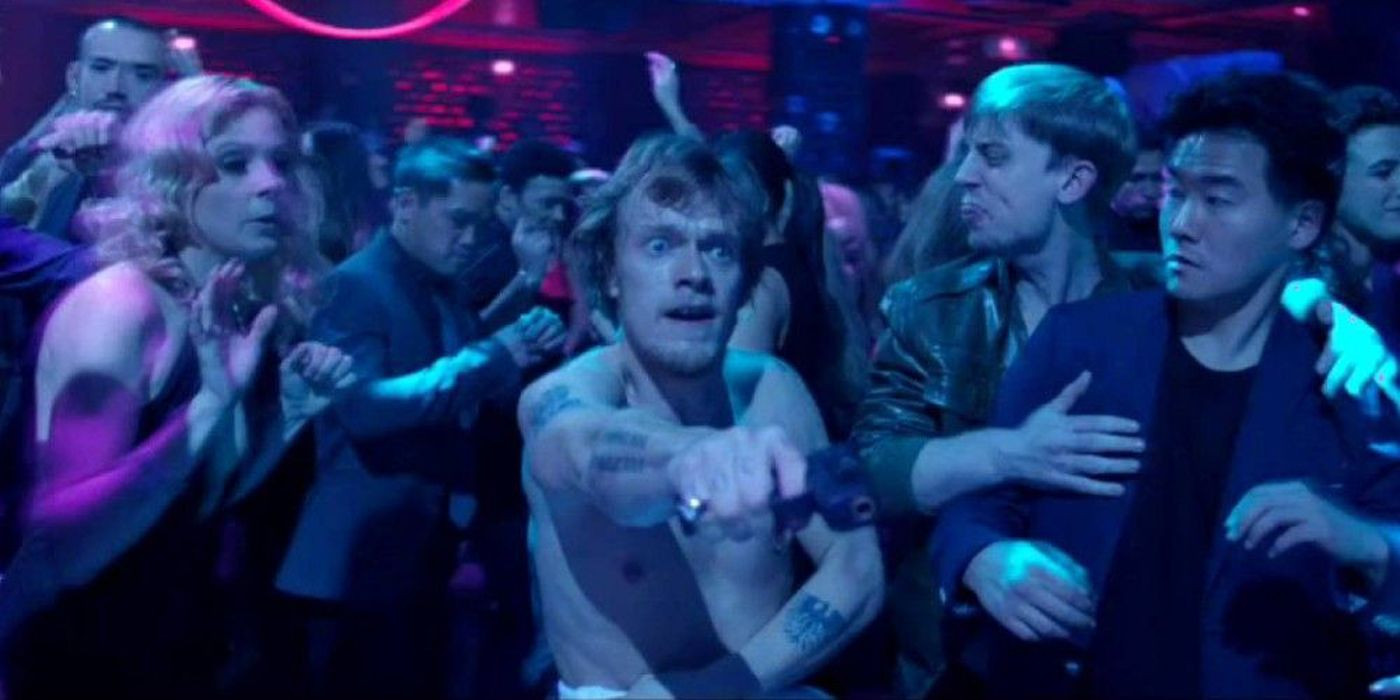 Iosef shoots a gun in the middle of a nightclub in John Wick.
Iosef shoots a gun in the middle of a nightclub in John Wick.
Delving deeper into John Wick’s back tattoo, the praying hands motif reveals a surprising connection to the world of fine art. The design is strikingly similar to “Study of the Hands of an Apostle,” a renowned pen-and-ink drawing by the German Renaissance artist Albrecht Dürer. This masterpiece is celebrated for its delicate white highlighting against black ink on blue paper. The incorporation of Dürer’s iconic artwork into John Wick’s back tattoo suggests a cultured side to the lethal assassin. Given the opulent lifestyles of his associates within the High Table and the organization’s emphasis on prestige, it’s conceivable that John Wick, even in his violent profession, developed an appreciation for refined artistry.
A Reminder of a Criminal Past: The Fiery Skull
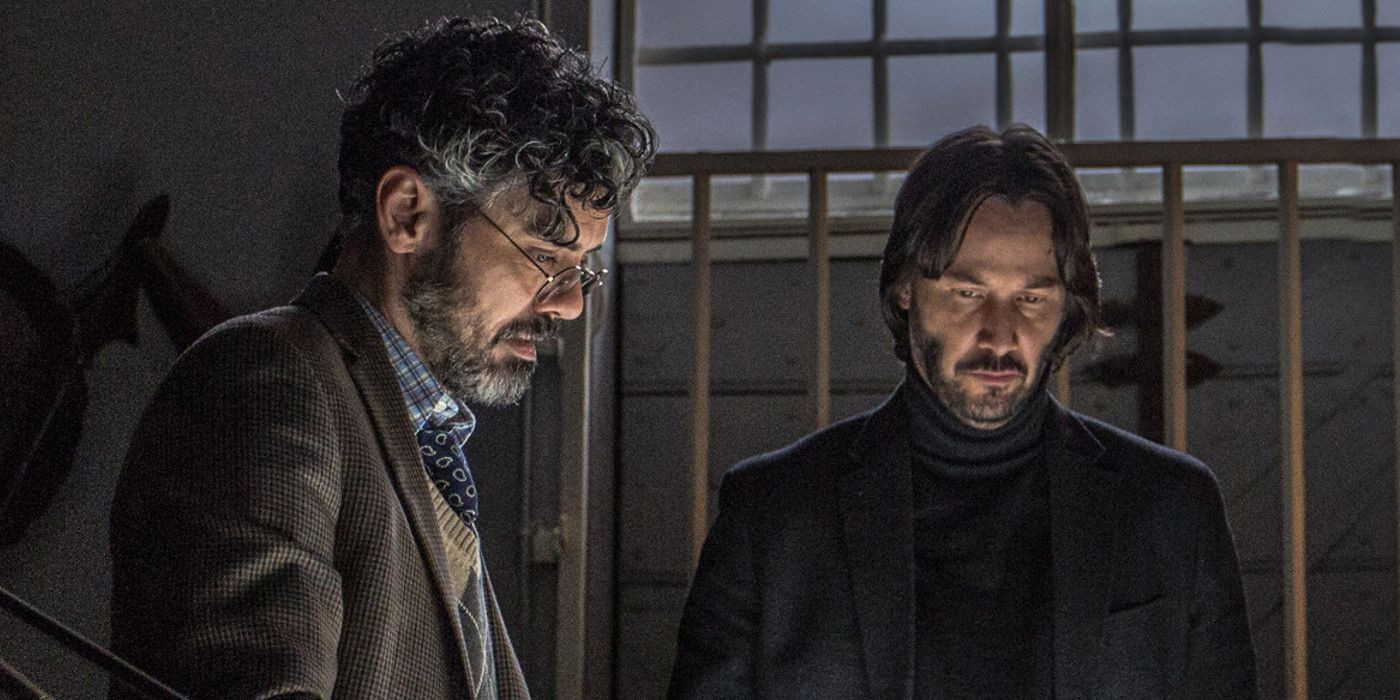 Simone Spinazze as the Cartographer with John in John Wick Chapter 2.
Simone Spinazze as the Cartographer with John in John Wick Chapter 2.
Another significant tattoo in John Wick’s collection is the fiery skull, not part of John Wick’s back tattoo but contributing to his overall inked persona. This tattoo serves as a potent reminder of his extensive and brutal criminal history. Depicting a skull engulfed in flames, it visually embodies Wick’s audacious and relentless nature. The fiery skull acts as a permanentMemento Mori, constantly reminding him of the life he has embraced or been forced to endure. Interestingly, this tattoo might also be a subtle nod to Keanu Reeves’ long-held desire to play Ghost Rider, a Marvel character with a flaming skull aesthetic, adding a layer of meta-reference for fans.
Ruska Roma Pride: Family and Allegiance
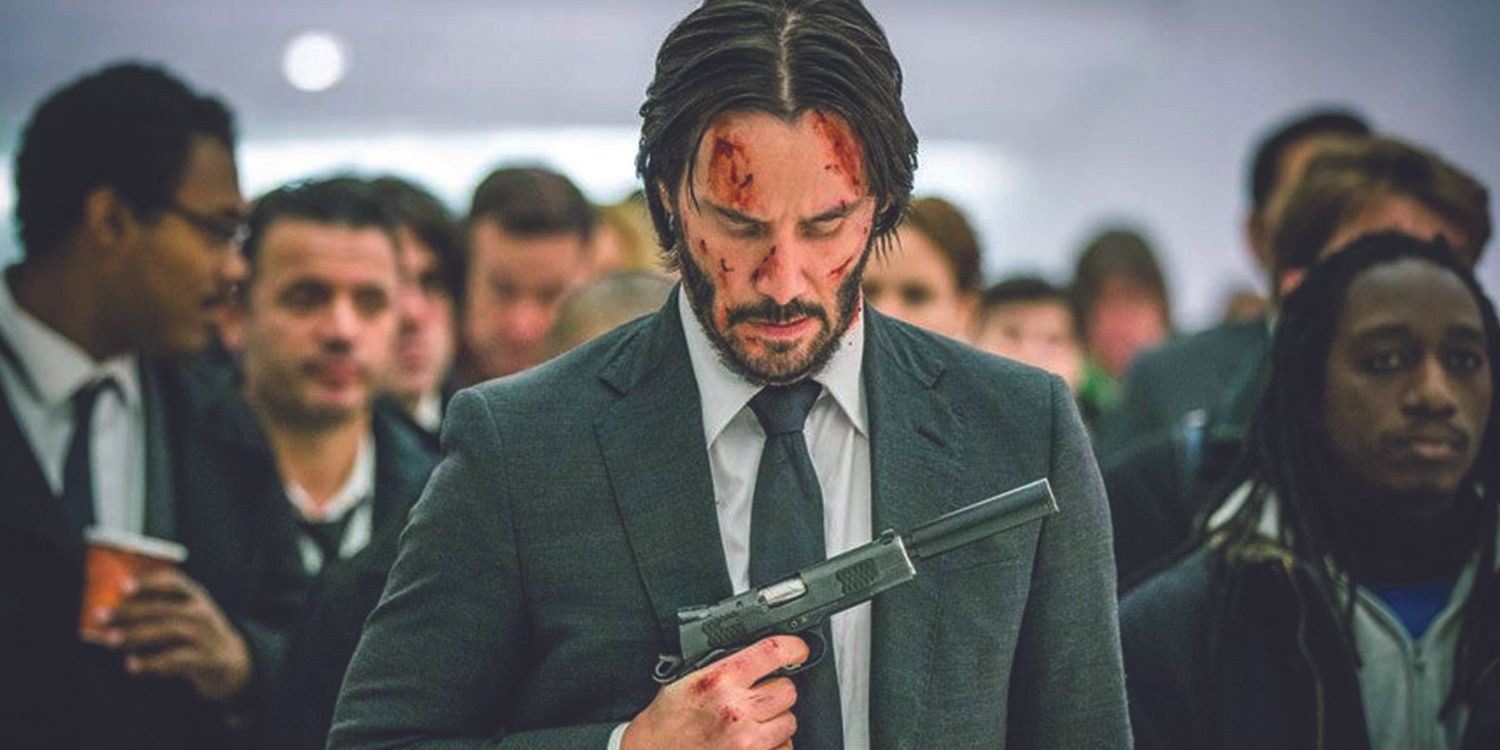 Keanu Reeves as John Wick uses a silenced pistol amid a crowd in John Wick Chapter 3 Parabellum.
Keanu Reeves as John Wick uses a silenced pistol amid a crowd in John Wick Chapter 3 Parabellum.
John Wick: Chapter 3 – Parabellum reveals John Wick’s birth name, Jardani Jovonovich, and his upbringing as an orphan raised by the Ruska Roma. Under the tutelage of The Director, he was molded into a formidable assassin, honing skills in both combat and dance, explaining his fluid and graceful fighting style. John Wick’s back tattoo, along with his other tattoos, could be interpreted as commemorating his deep connection to the Ruska Roma. These markings might signify his commitment and devotion to his adopted family. Notably, other dancers within The Director’s organization also sport extensive tattoos across their backs, shoulders, and arms, suggesting a shared visual language of belonging.
Tattoos as Markers of Allegiance: Within the Assassin World
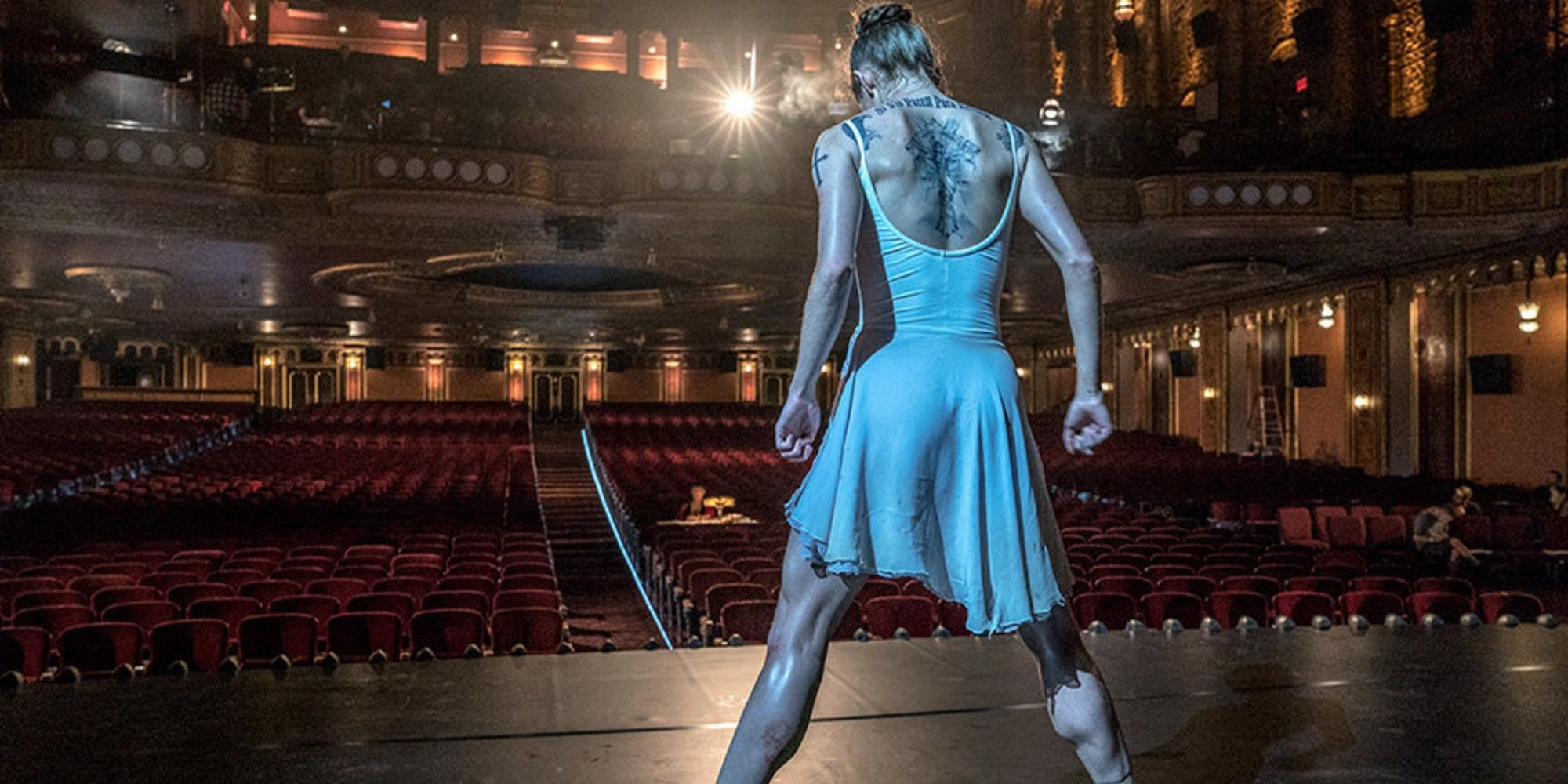 The Ballerina covered in tattoos in John Wick Chapter 3 – Parabellum
The Ballerina covered in tattoos in John Wick Chapter 3 – Parabellum
Just as John Wick’s tattoos might reflect his Ruska Roma affiliation and past Russian mob ties, the body art of other characters in the John Wick universe could indicate their allegiances within the intricate assassin network. Russian mob and prison tattoos often serve as visual records of deeds and accomplishments. Extending this concept, assassins sworn to various clans under the High Table might acquire specific tattoos to mark contracts, significant kills, or organizational affiliations. Therefore, observing the tattoos of different characters can offer subtle clues about their positions and loyalties within this clandestine world.
Assassin Ethos Encoded: “Einfühlung” and Moral Codes
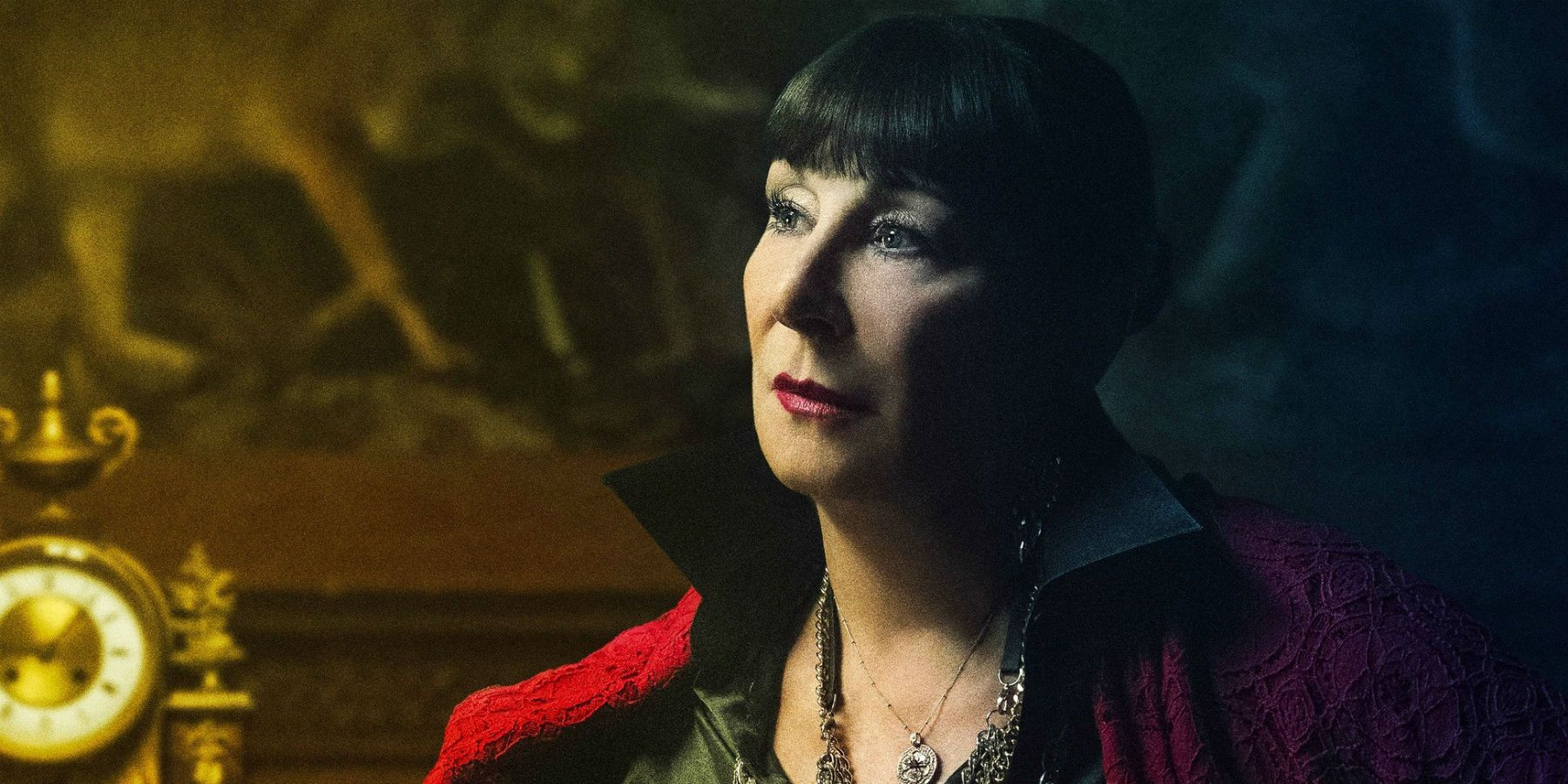 Anjelica Huston looks irritated in John Wick Chapter 3 – Parabellum
Anjelica Huston looks irritated in John Wick Chapter 3 – Parabellum
John Wick’s back tattoo, featuring “Fortis Fortuna Aduivat” alongside praying hands, encapsulates his ethos as a decisive and fearless individual guided by his own moral compass. He lives by a code of conduct that prioritizes bold action over fear. In contrast, The Adjudicator in John Wick: Parabellum displays the word “Einfühlung” tattooed across their neck. This German term translates to “empathy,” a seemingly ironic choice for a High Table representative. Perhaps this tattoo serves as a constant reminder for the Adjudicator to understand different perspectives and exercise fairness in their judgments, even within the ruthless world of assassins.
A Visual Division from Society: The Marked Elite
 The Adjudicator stands under an umbrella in John Wick 3 Parebellum
The Adjudicator stands under an umbrella in John Wick 3 Parebellum
The High Table and its shadowy guild of elite assassins exist as a separate entity, operating within society yet detached from its conventional norms. Bound by their own laws and doctrines, they often disregard societal rules. This inherent separation could be symbolized by the prevalence of tattoos among High Table associates. Their ink visually marks them as distinct from mainstream society, representing their belonging to this clandestine world. The switchboard operators in the John Wick films provide a compelling example. Occupying outwardly conventional roles, they are nonetheless adorned with extensive tattoos that would have been considered unconventional, even taboo, in previous eras, highlighting their separation from societal expectations.

